STUDY SITE INFORMATION RWANDA
Study area Rwanda:
- Rwanda is located in East Africa at the co-ordinates 2°00′S 30°0′E, bordering DR Congo, Tanzania, Uganda and Burundi.
- Rwanda covers an area of 26,338 square kilometers, and it is ranked the world’s 149th-largest country.
- Mean annual temperature for Rwanda is 19.1℃, with average monthly temperatures ranging between 19.5°C (September) and 18.5℃ (July).
- Annual precipitation is 1,170.2 mm. Rainfall is experienced throughout the year in Rwanda, with most significant rainfall occurring from September to May.
Biogeography of Rwanda:
- The country’s topography is mainly hilly giving it the name “Land of A Thousand Hills”
- The highest point is Mount Karisimbi 4507 metres above sea level and the lowest point is the Rusizi River at 950 metres above sea level.
- The country’s longest river is the Nyabarongo, which rises in the south-west, flows north, east, and southeast before merging with the Akanyaru to form the Kagera; the Kagera then flows due north along the eastern border with Tanzania. The Nyabarongo-Kagera eventually drains into Lake Victoria’
- The country is divided into 5 provinces, namely, Eastern, Western, Northern, Southern provinces, and Kigali city
- Rwanda’s administrative boundaries are divided into 30 districts
Population dynamics in Rwanda:
- The country’s topography is mainly hilly giving it the name “Land of A Thousand Hills”
- The highest point is Mount Karisimbi 4507 metres above sea level and the lowest point is the Rusizi River at 950 metres above sea level.
- The country’s longest river is the Nyabarongo, which rises in the south-west, flows north, east, and southeast before merging with the Akanyaru to form the Kagera; the Kagera then flows due north along the eastern border with Tanzania. The Nyabarongo-Kagera eventually drains into Lake Victoria’
- The country is divided into 5 provinces, namely, Eastern, Western, Northern, Southern provinces, and Kigali city
- Rwanda’s administrative boundaries are divided into 30 districts
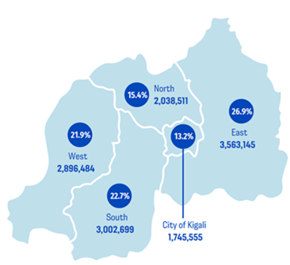
Source: https://www.statistics.gov.rw/publication/key-figures-5th-rwanda-population-and-housing-census-phc
Agriculture in Rwanda:
- Agriculture is a major economic sector for the people of Rwanda, employing about 70% of the total population.
- 75% of Rwanda’s agricultural production comes from smallholder farmers.
- Rwanda’s principal crops include coffee, pyrethrum, tea, flowers, beans, cassava banana, Irish potatoes, rice, wheat, and sugarcane, etc.
- About 61% of Rwandan soil is suitable for agriculture as the soils are fertile.
- Two planting seasons, Season A (short rain season), February to July, and Season B (long rain season), September to January.
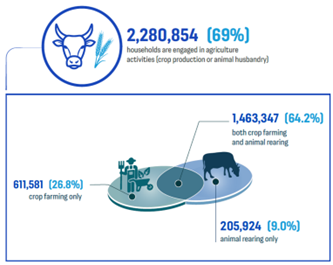
Source: https://www.statistics.gov.rw/publication/key-figures-5th-rwanda-population-and-housing-census-phc
Study region-Gatsibo district
- The UPSCALE project is conducted in Eastern Province, Gastibo district, Nyagihanga sector
Population dynamics in Gatsibo district
- Gatsibo District has a population density of 270 persons per square kilometer.
- The total population increased from 283,456 in 2002 to 433,997 according to the 2012 National Census provisional results
Agriculture in Gatsibo district.
- Gatsibo district is one of the Sustainable Agriculture Intensification and Food Security Project (SAIP) intervention sites across Rwanda.
- Agriculture production and livestock is the principal economic activity in Gatsibo District.
- 75.2% of the land is cultivated, fallow (4.7%), and pasture and non-agricultural land represent only 20.1%.
- Main crop produced are cereals (maize and rice) representing 29.5% of cultivated land, followed by legumes and pulse at 28.5%, and bananas on 23.14%.
- Livestock keeping is also an important source of income and food for agricultural households.
- 69.7% of Households in the Gatsibo district own livestock mainly cows
General overview of demographics, and agriculture in the Nyagihanga sector
- Area of 71.93 km²
- Population of 28,812 inhabitants (2022 census)00.6/km² Population Density [2022] 1.8%
- 6129, farming households
- The average field size is 0.5 Ha
- Main crops are maize, beans, bananas, coffee, sorghum, vegetables, soybeans, groundnuts,
- Main Cropping practices in the area are mixed maize and beans, rotation of sorghum and beans, mixed beans and bananas, and rotation of maize and Irish potatoes.
- Farmers keep livestock such as goats, pigs, and a few modern cows producing < 10 litres of milk and chickens. Very few traditional cows.
Key challenges facing the farmers in Nyagihanga (pests, erosion, water, land tenure, farm sizes)
- Poor soil infiltration especially after heavy rain that happens in the months of March and April.
- Pests; Stem borers, fall armyworm in cereal crops
- Drought, resulting in livestock eating all grasses including desmodium and brachiria during the dry season.
- Bad road to transport the harvest to the markets.
- Many households are remote thus far from the marketplaces.
- The landscape is highly mountainous, leading to frequent soil erosions, and mudslides.
- Inadequate access to water especially for households living and cultivating up the mountains.
- Limited farming areas, most of the farmers possess < ½ ha of land, thus limiting crop diversification, in turn restricting the household’s access to a balanced diet
Since when was push-pull introduced, how many farmers have been using/ trialling it, and what key challenges does it involve?
- Push-pull was introduced towards the end of 2017 with ICIPE in collaboration with the Food for the Hungry organization and the Rwanda Agricultural Board.
- In 2018, about 47 lead farmers were trained and became Trainers of Trainers (T.o.T)
- The farmers embraced the technology in response to fighting stem borers and fall armyworm pests.
- Desmodium and Brachiaria became popular amongst livestock farmers as well due to their highly nutritious components as farmers witnessed an increase in the quantity of milk from their cows
- Currently, 750 farmers practicing push-pull technology in Nyagihanga as per the previous planting season in 2023.
Key challenges in push-pull technology
- Some species of desmodium dry up quickly during the dry season,
- The high cost of desmodium and brachiaria seeds became a barrier to the participants to scale the technology.
- Travelling long to the big city to get desmodium and brachiaria seeds because they are not easily found in the local input stores; or agro-dealers.
- Less number of livestock to help farmers get organic manure.
- Crop rotation, forcing farmers to uproot the desmodium to plant edible intercrop
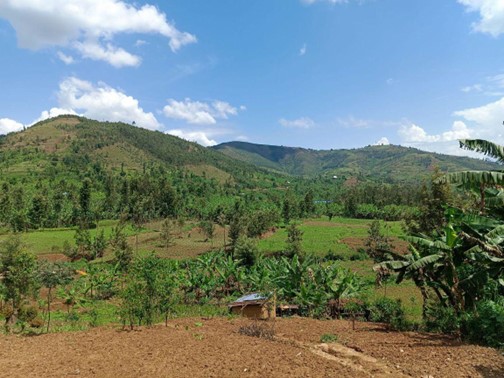
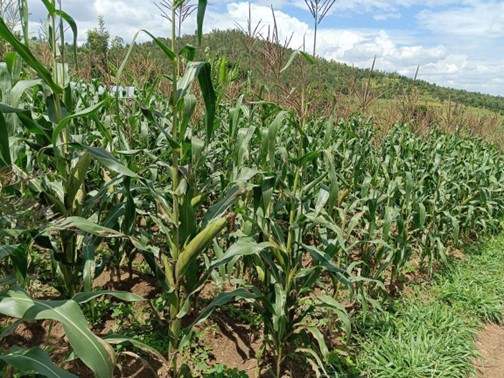
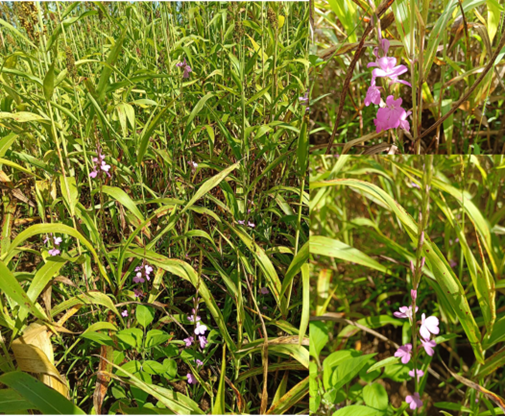
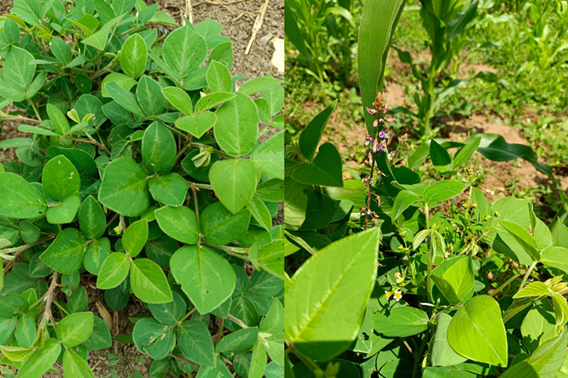
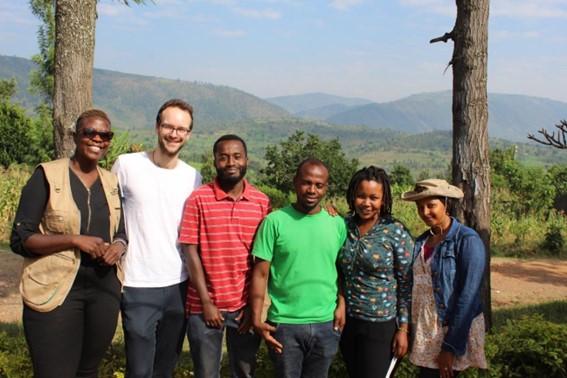
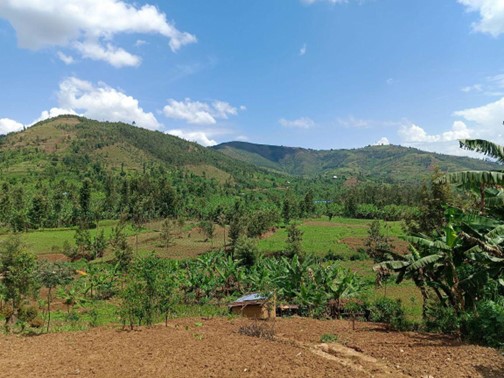
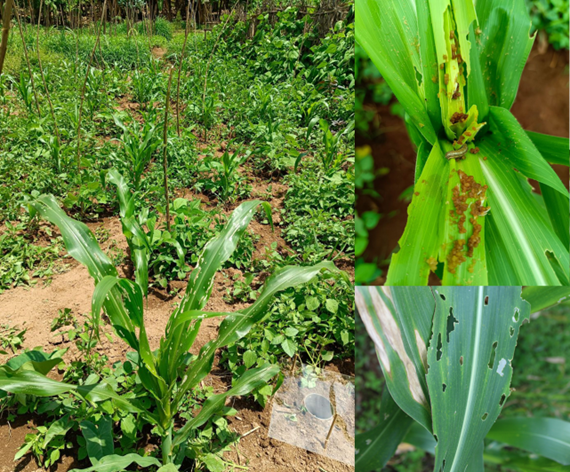
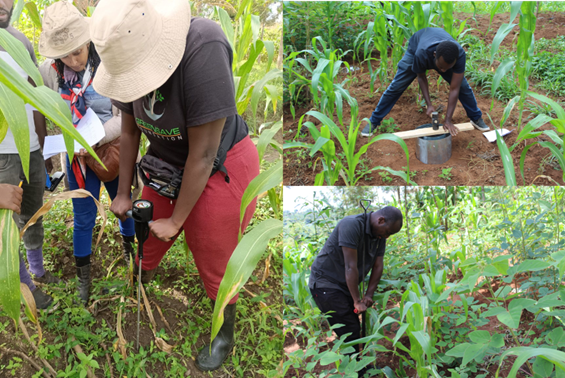
SOIL MAP
Fertility Excellent |
|
Fertility Excellent (if slope > 2%) |
|
Fertility Good |
|
Fertility Marginal |
|
Fertility Poor |
|
Fertility N/A |
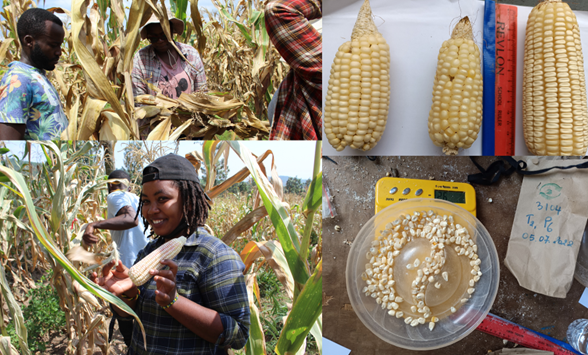
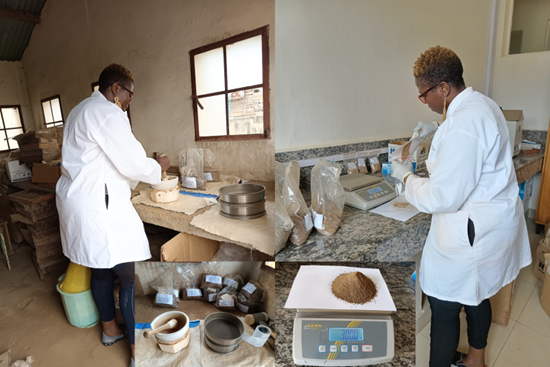
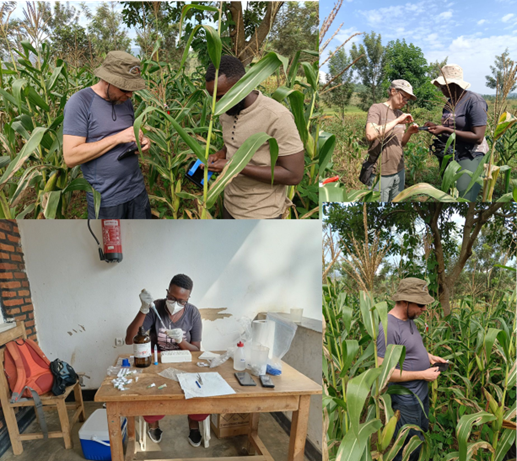
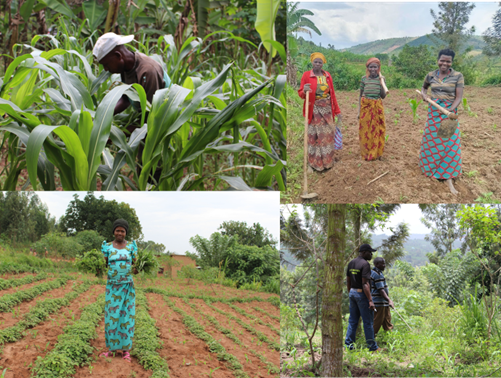
References:
- https://climateknowledgeportal.worldbank.org/country/rwanda/climate-data-historical#:~:text=Mean%20annual%20temperature%20for%20Rwanda,occurring%20from%20September%20to%20May.
- https://www.statistics.gov.rw/publication/key-figures-5th-rwanda-population-and-housing-census-phc
